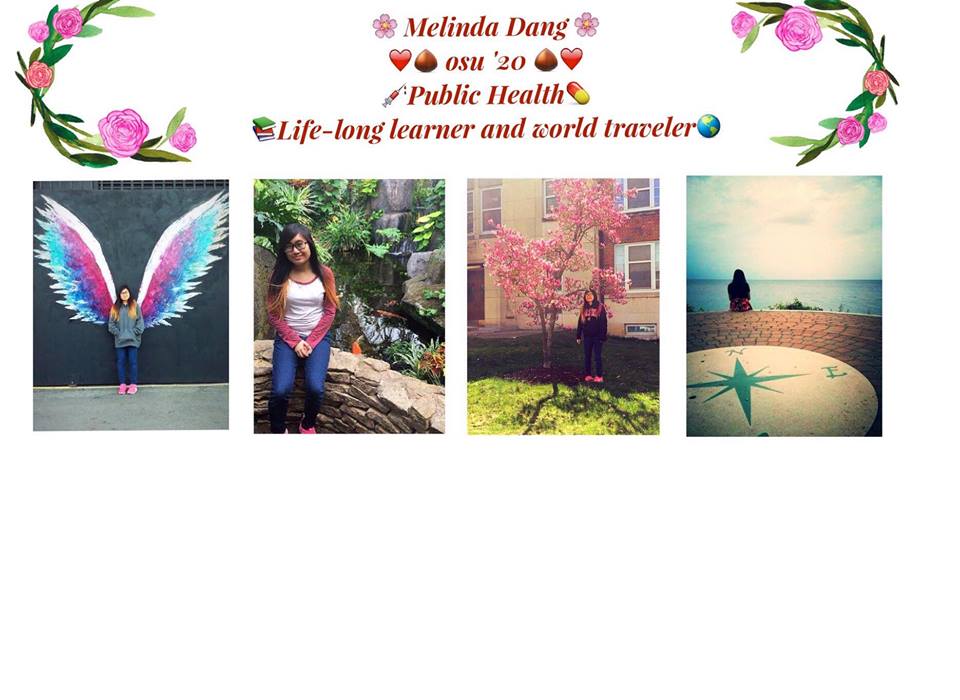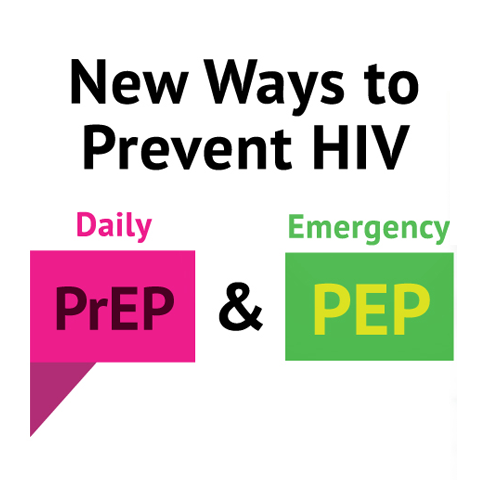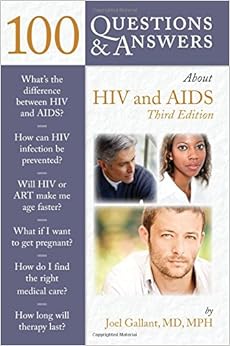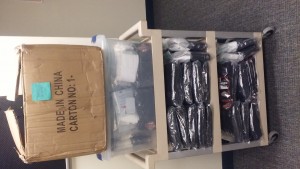This summer, I am blessed to have earned a spot in the 2019 cohort of the Summer HIV/AIDS Research Program (SHARP) with the San Francisco Department of Public Health! Six students were selected to come on board with SFDPH. Ninety six people applied and there were multiple interview rounds. Having applied for the 2018 cycle and not making it through to even the first round, I was pleasantly surprised and grateful for making it this far and succeeding in my search for an internship that would address my needs and interests holistically.

I applied for SHARP because of its various components.
First and foremost, it helps young and passionate individuals who come from underrepresented communities and “humble beginnings” to pursue public health careers and address health disparities. Scholars receive mentorship from multiple people, including distinguished researchers. Scholars get to work with these mentors on their projects as well as conduct their own individual projects based on their interests and skills. Weekly seminars, networking events, social outings, and field trips were also included to make for a busy but productive and prosperous summer.
In addition, this program takes place in San Francisco, a city that was ground zero for the HIV epidemic in the 1980s/90s in America. There is much history here as well as public health innovations and programs that I would not find anywhere else. Furthermore, I wanted to challenge myself by going to a different city to live and work. This opportunity would serve me well in my career advancement and exploration as well as personal development. With all that SHARP has to offer, I also had much to bring to the table: my passions, skills, character traits, and excitement.

WEEK ONE
6/1 – I flew into Oakland on June 1st, the day after I returned to the United States from my study abroad. (I saw my family for about 12 hours). The flights went well and I met kind strangers on the plane rides. From Oakland airport, I easily made my way to the BART, Bay Area Rapid Transit. The instructions given to me by my supervisor, the director of SHARP, were straight-forward. When I arrived at the downtown Berkeley station about an hour later, I then lugged my two pieces of luggage, about 40 to 50 pounds worth, while wearing a backpack and purse, to my apartment. It was certainly an endeavor but I found my way to the place I would stay for 11 weeks.
My apartment came furnished with a mattress, bed frame, desk, chair, and dresser. I had to provide my own sheets, pillows, and curtains. I could not find curtains anywhere in the area so I used a bed sheet and temporarily hung jackets and cardigans. (Amazon has great tapestries, which is where I got mine!)
6/2 – On Sunday, I tried to find a library that was open on University of California – Berkeley’s campus so I could do work, but all were closed. I discovered their student union, which was open and had a dozen students working on their laptops. I typed up a reflection essay for a grant I received for my study abroad. Then I purchased sweatshirts at a campus apparel store; the city of Berkeley was cooler than I anticipated. I did not pack as warmly as I should have.

This map of the BART system is posted online, in booklets, and displayed on the trains.
The first week of SHARP is an Orientation/Introduction week. As I was learning to use BART and adjusting to San Francisco’s and Berkeley’s different environments and weather and people, I learned about the SFDPH and what I would be doing over the summer.
6/3 – First Day of SHARP!
I was brimming with excitement and nervousness for what I consider to be my first ever internship. While I have had a myriad of experiences with research, volunteering, and work, this is my first formal internship program. I wore a striped sweater and blue slacks for my first day. Since I expected to acquire some papers for the first day, I carried my backpack.
Two other interns met up with me in the morning so we could commute to work together. We arrived early and got to meander around the blocks surrounding our office building. Then we made it to our location and greeted our program supervisor! We went around introducing ourselves. Most of the day, we went over pages of hiring paperwork and we completed online trainings related to ethical research practices, privacy and safety, and compliancy. Part of internships and jobs require intensive paperwork in the beginning!! Complete these in a timely manner and fill them out accurately. Truly take the time to look it over and understand what the papers involve.

We had to fill out tax forms as part of our employment. As young adults, the process can be confusing. Do not hesitate to ask others for help!
6/4 – We had a meeting with two SHARP alumni. This was very informative and they told us candidly about their experiences. Some important tips for surviving and thriving in SHARP are to do self care, and schedule that in if needed. Reach out for support from your cohort. We are in this together and we can help each other out.
6/5 – On this day, we received an intro to public health and to SFDPH. We also received a tour of the building. SFDPH has different divisions and centers, so it was a good exposure to see how the department’s individual units operate.
For lunch, scholars and most of the mentors had a meet and greet lunch, which was pizza from The Market.
6/6 – The scholars toured the San Francisco City Clinic, which has served the Bay Area since 1911 by providing affordable sexual health services to all in need. Our tour guide was a practicing physician who encouraged us to ask questions and also asked us questions to test our knowledge and critical thinking. I learned new things from this experience, including increasing my awareness of the types of testing for different STIs.
Some fun facts:
– Those who are diagnosed with HIV get placed into care within five days of diagnosis.
– Chocolate agar helps gonorrhea cells grow and the other bacteria dies so that technicians can determine if someone has gonorrhea or not.
– I heard about the 2-1-1 method for PrEP the first time.
“PrEP 2-1-1 is named for its schedule of dosing: 2 pills are taken 2-24 hours before sex, 1 pill 24 hours after the first dose, and 1 final pill 24 hours later. Clinicians only recommend PrEP 2-1-1 to people having anal sex, since the medication may not reach high enough levels in vaginal or front hole tissue.
Remember: It is important trans men, women and other people with vaginas or front holes to take PrEP every day as prescribed in order for it to offer full protection..” Source: https://www.sfaf.org/resource-library/prep/
– People get two tests to confirm that they have HIV. If the first test is positive, a second test is done to confirm.
– I also heard about dark-field microscopes for the first time! Specimens appear bright against a dark background
http://sfcityclinic.org/
- I see this piece as a mother and child who come to this hospital for help and healing. The heart sculptures are a cute touch and I interpret them as guardians that reassure patients and visitors that this place cares.
- These hearts are part of an art installation around the hospital, which locals call “The General.”
- Tom Otterness is the artist behind the hearts.
Next, we walked to Ward 86 at San Francisco General Hospital, where we met up with Dr. Phillip Coffin, a Co-Principal Investigator of SHARP, to discuss HIV and STIs and his experiences as a physician related to the field. This ward was the one of the first to treat patients during the HIV/AIDS epidemic and is renowned worldwide for care and research. As Dr. Coffin spoke, I tapped away at my phone to take notes.
Here are several facts I would like to share:
– HPV (human papilloma virus) causes cancer such as cervical cancer, but rates of this cancer are already plummeting “fabulously,” says Coffin. He thinks pap smears will be unnecessary later on down the road.
– Hepatitis B and C can also cause cancer.
– I heard about Castleman’s Disease for the first time; this rare disorder can affect people of any age but usually people middle-age and up.
– Repeated constipation can lead to colon cancer.
– Cancerous tumors can be solid or liquid. Liquid tumors are blood tumors and can be everywhere, since blood runs throughout the body. Leukemia and lymphoma would fall into that category. There tends to be higher cases of lymphoma in people living with HIV. For liquid tumors, full body therapy is needed. I can imagine it takes such an enormous toll on the body.

Source: AIDS Info, NIH.gov
– HIV first tries to go towards the gut and attack the large amount of immune cells there.
– Acute HIV can mean CD4 cell counts drop significantly, and the diversity of immune cells get wiped out. The human body is then at higher risk for different viruses and it cannot remember what it has been exposed to.
– Two people have been cured of HIV through stem cell transplants that are very invasive and fail most of the time. Some people may have died trying to get transplants. There must be a genetic match. White blood cells get taken out and stem cells get put in.
https://www.ucsf.edu/news/2011/06/104005/sfghs-ward-86-pioneering-hivaids-care-30-years
https://zuckerbergsanfranciscogeneral.org/
6/7 – Our morning session entailed an Intro to Medical Apartheid: The Dark History of Medical Experimentation on Black Americans from Colonial Times to the Present, by Harriet A. Washington. Before this meeting, scholars read the first few chapters of the book as well as a scholarly report on the state of Black Americans and their health in America, tying in impacts related to education, morbidities and mortalities, and housing. We spoke about what we found salient or shocking from the readings.

This book may come as a shock to many people, but it is necessary to bring this into conversations to create social change that is deserved by affected communities.
The contents of the book were not entirely new to me, as I had learned a bit about exploitation of Black Americans’ bodies throughout America’s history during my schooling so far. Nevertheless, I was deeply frustrated and troubled at how physicians and other stakeholders in the slave trade exploited Black Americans’ bodies for not only labor, but for medicine. These enslaved peoples had no rights or say in what was to happen to them; they were stripped of their dignity and oftentimes their clothes. It was horrifying to read the book and visualize in my head the unspeakable atrocities committed by folks who believed in white supremacy, eugenics, racism, and more.
Despite white people in America viewing Black Americans as inferior in intelligence and other attributes, and of a different species entirely, these racists were fascinated by Black bodies and wanted to do research on them to help forward medicine. They wrote about their findings in medical journals that were only accessible by white male doctors. Many of their arguments for the experimentation and exploitation were illogical; if Blacks were nothing like whites, how could the research results be applicable or translated?
I am slowly getting through the book. It evokes much emotion out of me and I hope that others read this book to understand more about America’s history and how the field of medicine has benefited greatly from unwilling bodies. It really makes people think about the narratives we are told in school and what was hidden.
In the afternoon, we toured Gladstone Institute on UCSF’s Mission Bay campus. The afternoon was divided into visits to different labs. We spoke with researchers and interns at the facility.
https://gladstone.org/
WEEKEND:
By the end of the week, I was relieved.
On Saturday, I tidied up the apartment and while helping to water plants and weed the gardens, I made a friend in my apartment complex. It turns out that she is an intern at Gladstone for the summer, so I will see her around! We later went out for a meal, explored the area where we were living, and got bubble tea. That evening, I did laundry.
On Sunday, I attended a BBQ at the house of one of the SHARP mentors! It was a great opportunity to relax in an informal setting and meet working professionals. I also read part of a manual on HIV.
This weekend, the Bay Area underwent a heat wave that warranted a public health alert in advance. SFDPH employees and interns received emails warning us to prepare for the wave.
WEEK TWO
6/10 – Today’s session was Introduction to Research Concepts. It was presented at a calm pace and I felt relaxed. Research is divided into qualitative and quantitative methods; a combination of these two is called mixed methods. I liked that numerous examples were given.
We took a trip to UCSF for a quick tour of the medical center and its cafeteria, and the CAPS floor in Mission Hall.
https://prevention.ucsf.edu/
6/11 – At UCSF Mission Hall, I attended my first Town Hall meeting.
Then I met my mentor for the first time! I was ready with a list of questions to ask her regarding her personal life and her professional trajectory. We went over our Mentor and Mentee Agreement. We discussed goals, expectations, modes of communication, and what we plan to do over the summer – that is, what project(s) we work on and what outcomes to expect by August. I scanned this document and copied it to my mentor and to my program supervisor for their records. My mentor and I scheduled our meetings for the next two weeks.
6/12 – The Substance Use Pt 1 session was informative and eye-opening.

Swapping common phrases that stigmatize people who use substances can make a profound impact on public perceptions and subsequent actions from individual to institutional. Photo from https://www.thenationalcouncil.org/topics/addictions/
We got our SFDPH badges! We also took group photos and individual headshots. These photos will be used in a flyer to advertise for SHARP’s symposium in August.

The SHARP cohort is looking sharp! Fun Fact: City Hall was rebuilt after the great earthquake and fire in 1906. It took two years to finish this current building.
Scholars gave mini presentations on ourselves and things we liked or are passionate about for a maximum of 5 minutes. I talked about some of my favorite foods, musical artists, and TV shows. Another scholar discussed his involvement with sex education during college and how that experience has shaped his career aspirations. Another peer described the places she wanted to visit in the future. One of my peers shared her YouTube channel and how her videos center around lifestyle, including her dorm room in college, her outfits, and her spring break. Next, a scholar talked about his personal life and the different identities/roles he has as a brother, student, and more. Finally, a peer discussed his involvement with a summer program that prepares high school students to be community leaders and competitive applicants for college! These presentations were personal and fun.
6/13 – This day was spent doing readings and taking notes.
6/14 – On this day, scholars submitted timesheets to be approved so that we can get our paychecks on time! Our morning session was a presentation by a former SHARPie and current community programs manager of Bridge HIV, which is based in our building of SFDPH.

According to their website, Bridge HIV is “a global leader in HIV prevention research, working with Bay Area and international communities to discover effective HIV prevention strategies.”
Bridge HIV is a grant-funded research unit that seeks to find ways to prevent HIV infection and related diseases both locally and globally. From what I understand, Bridge has different clinical trials as well as different phases of research studies to eventually discover a vaccine or some type of preventive measure like PrEP.
In the evening, after work, I watched a nature documentary called The Serengeti Rules (2018) with another scholar and her mentor. I was thankful to have been invited to this screening, which was special as one of the scientists featured in this documentary was able to attend this event and answer questions from the moderator and audience. I learned new things about keystone species and more about different types of animals like sea otters, urchins, kelp, and wildebeest.
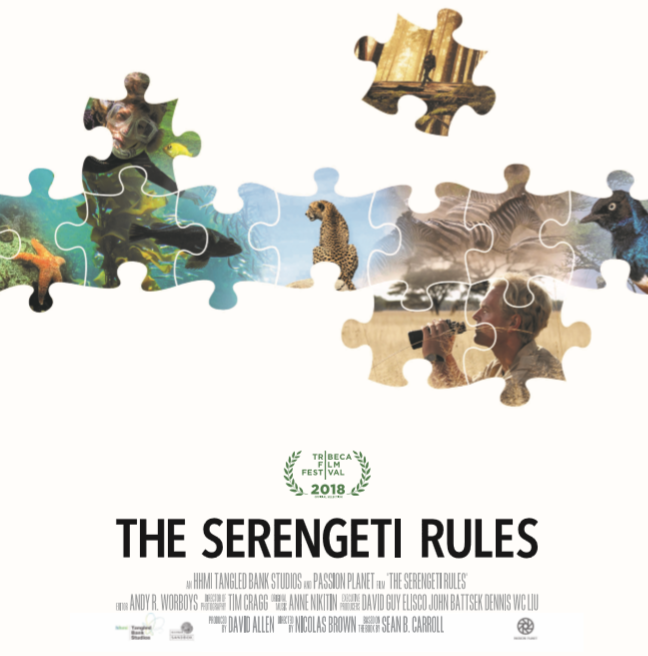
This beautiful film captures different ends of the world and allows us to view some of the most rare and vulnerable species. It sheds light on the interactions between species and the influence of human behavior on entire ecosystems.
WEEKEND: On Saturday, I completed three hours of work shift around the complex. I vacuumed carpeted hallways and weeded a small section of the garden in the back. After that, I went thrifting with a fellow Scholar. This lasted for hours and I have a newfound love for Buffalo Exchange, which offers affordable and trendy clothing! (Tip: Bring a reusable bag with you at all times! My clothes fit into my tote so I didn’t have to purchase a bag). My friend and I then tried Bongo Burger for dinner. It was a productive day since I added to my professional wardrobe. Sunday, on the other hand, does not stick in my memory.
WEEK THREE
6/17 – SHARP’s session on HIV 101 took place at GLIDE, about 20 minutes away from the office. Since 1963, GLIDE has served people in the Tenderloin District of San Francisco with compassion and care, along with social justice in mind. Their services are far-reaching and address the social determinants of health that every individual needs, such as food, housing assistance, healthcare, and family services. GLIDE aims to address and alleviate poverty and overall suffering.
What I got from this session was that people living with HIV take three pill regimens. In the 1990s, it used to be 15-20 pills. Some people still take quite a lot of pills. In 1993, medications for children living with HIV came about. People also donate their bodies to science to help scientists find a cure for HIV.
More information: https://www.thewellproject.org/hiv-information/care-and-treatment-children-living-hiv
https://aidsinfo.nih.gov/understanding-hiv-aids/fact-sheets/25/82/hiv-and-children-and-adolescents
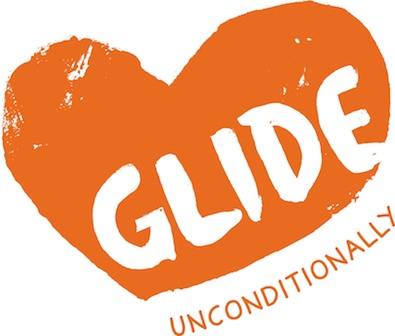
GLIDE’s logo is an orange heart. This organization wants to have an unconditionally loving community.
https://www.glide.org/
6/18 – I spent most of the day reading more chapters of Medical Apartheid and enhancing my knowledge of the unjust medical history of America. In my notebook, I jotted down powerful points and facts. However, that day, I had trouble concentrating and felt so fatigued. My self care skills are not up to par. Self care is important at any stage of life, and it is increasingly difficult to perform and maintain as a person gets older and more independent.
6/19 – We had a Meet and Greet with other interns from the Department of Public Health. They are at different buildings in the city, but within walking distance. We did a familiar icebreaker called Concentric Circles. One set of people stood in a circle facing outward. Surrounding and facing these people were the other set of interns and staff. This outer circle of individuals would rotate around to the next person after each round. Some questions that were asked were: “When did you first notice your race?,” “Talk about an instance when you were stereotyped,” “Describe the neighborhood you grew up in,” and “Describe who you were taught to trust and not to trust growing up.” These questions were
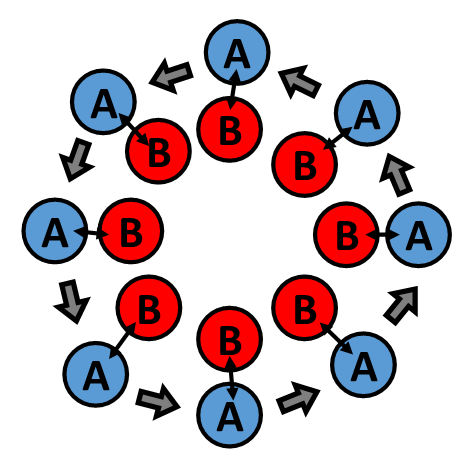
This diagram illustrates Concentric Circles. The “B” group remains in their spots while the “A” group members rotate. Sometimes people use numbers 1 and 2 instead of letters.
Following the activity, I briefly stopped at a Juneteenth rally at City Hall’s front steps.
Then I attended a Juneteenth feast and celebration at UC Berkeley’s Black Resource Center.
For more information on this holiday: http://juneteenth.com/
That afternoon, I bought more work-appropriate shoes but later on did not like them. Tip: Always keep the receipt!
6/20 – I spent a good portion of the day at UCSF. There, I had an informational interview with a researcher who worked with my mentor on a research project before. She provided some tidbits of advice from her experiences so far. One piece of wisdom she shared was that confidence is key.
Right after that, I went to an office hours/working session with Dr. Conroy. She is one of the SHARP mentors for this year. The mentors for the 2019 cohort want to be accessible to the other mentees, not just the scholar that they are spending the most time with. They are trying to be a team of mentors, and since some mentors are out of the office at different points during the summer, the mentors want to make sure that there is at least one mentor that the mentees can seek out and talk to about their research progress and other concerns. Dr. Conroy gave us a refresher on Dedoose.
After having lunch at the medical center cafeteria, I met with my mentor. We discussed the projects and my thoughts on the readings and then she assigned new tasks for me. When I write down notes from our meetings, I use a highlighter to underline the “action items.” I also got access to the Drop Box to access transcripts, the codebook, and analyses.
That evening, I did my best to prepare my 5Ws and 1H for the Works In Progress session the following day. By this time, scholars are expected to know what their research question is (or some ideas for it), who are the participants being studied, what type of research it is (qualitative, quantitative, etc.), when the study was conducted, where it took place, and why this research is relevant and valuable. Furthermore, how did the research happen? For example, were there questionnaires or focus groups?

Remember these words when researching a topic!
6/21 – During our Works-In-Progress session, led by Jonathan, each scholar took a turn at explaining their project. As a scholar talked out loud, Jonathan wrote an outline on the white board. He asked us questions to gain clarity and to help us think about our projects. He offered us suggestions for going forward with our research.
After the session, one of the scholars and I had lunch while watching the movie Naz and Maalik. This 2015 American drama film covers a summer afternoon of two closeted gay Muslim teenagers. These two fall under suspicion of an FBI agent. People affiliated with SFDPH attended this film and some remained for the discussion afterwards. One point made was that the teen boys were both black, which was visible to others. One wore a headpiece that indicated to others that he was Muslim. It was likely a combination of these two identities that made the FBI agent weary of these teens and wonder about their actions or intentions. This was a very interesting film and throughout it, I was on edge because I was nervous that something unfortunate would happen to these two young men who can attract negative attention just for their identities. In American society, certain identities such as Black Americans or Muslim Americans can be targeted and perceived to be threats to safety and wellbeing.
In the evening, I went looking for clothes by myself in a shopping center in San Francisco. I had to return home before it got dark.
WEEKEND:
6/22 – After doing homework, I did laundry, which I designated for Saturdays.
6/23 – My Sunday was super fun and fulfilling, as I was able to visit numerous places on my bucket list. My oldest cousin flew in to enjoy San Francisco and we started by looking around Chinatown. We ate dim sum for breakfast in one of the parks where elderly folks gather to play chess and joke around. We looked around in some stores and got bubble tea. We also went to Fisherman’s Wharf, Lombard Street, Ghirardelli Square, and Palace of Fine Arts. All in all, I walked 9.7 miles! From this excursion, I saw different parts of San Francisco. I really liked Chinatown and will return to explore more of the culture and community.
WEEK FOUR
6/24 – The group had a Stats 101 session! Sometimes there’s statisticians for research teams but it’s always helpful to be familiar with statistics to do yourself.
After lunch, I had a one-on-one check-in with Jessica, my supervisor. Then I resumed my research.
6/25 – We had our first payday! I was very thrilled to hear that. I had a morning meeting with my mentor and another of her summer research interns at Asian Health Services, a community health center in Oakland’s Chinatown. AHS was established in 1974 and primarily serves Asians and Asian Americans, but they will not turn away people of other races who are seeking care. Services range from behavioral to family planning to urgent care. Since 1985, AHS has operated an HIV program. My mentor, colleague, and I spoke with the HIV program manager to gain an understanding of what AHS is, what their HIV program does, and the demographics of the communities they work with.

AHS has evolved from a one-room clinic to a comprehensive health center. https://asianhealthservices.org/history-of-ahs/
6/26 – After our Quantitative Research session, I worked more on my PowerPoint and research.
6/27 – I met with my mentor at UCSF to touch base on my progress and my questions. Then we held a team meeting, where we went over an interview transcript in detail. My mentor gave us more assignments and deadlines for them. Right after lunch, I had another one-on-one meeting with my mentor to continue asking her some questions. She shared her experiences and insights regarding the path of Ph.D. and being a researcher whose salary is dependent on grants. This talk gave me more to think about as I contemplate what my steps following graduation could possibly be.
At the end of the day, I went with three other SHARPies to a Pride Nightlife event at California Academy of Sciences! For a few hours, we promoted Bridge HIV by recruiting a target population for HIV prevention research and increasing people’s awareness of their organization, their work, and most importantly, HIV and sexual health. We had a spin-the-wheel where we asked people trivia questions in order to get water bottles and T-shirts.
- People representing a booth/table should stand at the sides and make sure people passing by can read the organization logo.
- On the table are water bottles, stickers, tiny informative cards, hand sanitizer, buttons, a spinning wheel, and recruitment forms.
6/28 – Mini Presentation Day!
Each scholar was to present a PowerPoint on their research project for no more than five minutes. We went in the order that we are to go in for our actual presentation on Symposium Day, August 9th.
Our mini presentations went well! I am very impressed by my peers and they motivate me to be my best self. After each scholar was done speaking, we clapped and asked questions about the project. Next, we provided positive feedback and shared what we liked. Then we offered opportunities that we saw for improvement. We critiqued on PowerPoint layout, fonts, images, colors, presentation style, eye contact, body language, and other factors. This session was something I was internally groaning about, but it went better than I thought.

There are countless templates on Microsoft PowerPoint and Google Slides. Scholars are required to use a template provided by the SFDPH. Nevertheless, our slides will still differ from each individual!
On my turn, I stayed under the time limit. I felt like I kept a good pace and did not glance at the slides too much. Some takeaways from this first round was that I could add more visuals to some slides, which I agree with. People liked that I began by defining the populations I was studying. Somehow I also maintained a pleasant smile on my face during my talk. This session was great practice and I know I will improve from here on out.
I remained at SFDPH to do work. In the evening, the six scholars and four people affiliated with SHARP relaxed at a Happy Hour event. This was a casual space and we discussed music, fashion, and careers. I think this was my first time going to a Happy Hour. The rest of my night was calm; I spent time typing up this blog post.
WEEKEND:
6/29 – I went thrifting at different stores along Telegraph Avenue. Buffalo Exchange holds strong as my favorite. Afterwards, I tried Uji Time Dessert’s ice cream with a scholar and had a nice conversation.
6/30 – San Francisco Pride was an exciting experience to be a part of! A peer did my makeup for the festivities and our group headed to our designated area. SFDPH was Contingent 11 this year, whereas in previous years they were placed farther behind in the parade formation. By the time we met up with the rest of the department, T-shirts had already been distributed and we took the leftover size XL shirts. We had materials to pass out to the crowds: condoms, lubricants and hand towels. Eventually we took off for the march/parade, which lasted a few hours. We had several stops along the way. To pass the time, people from our group and other groups danced.

The colors of my dress (blue, white, pink) correspond to the transgender flag, except my stripes do not align in the order of the flag’s colors.
Five out of six scholars marched in the parade!

Absent is one of the scholars. We are joined by Jonathan, one of the Co-Principal Investigators of SHARP!
JUNE REFLECTION
What an eventful June! I cannot believe that a month of the program has passed. I really appreciate the chances I have gotten to talk with people about their experiences and outlooks on life. At this point, I look to honing in on my research, narrowing down my research question, and continuing to take life one day at a time, and one step at a time.
Some peers asked me if I could see myself living out in the Bay Area in the future. When envisioning it, I do not know about that. While I have experience taking public transportation throughout high school and college, in Ohio as well as Chicago, NYC, and Japan), I wonder if I can take it daily for work. I am concerned about poor sanitation, lack of adequate air conditioning, noise, potential hearing loss, crowdedness, unpleasant smells, and long commutes.
Nevertheless, the sessions throughout the summer are constructive and productive and I enjoy exploring the Bay Area. I wonder what the next month will bring.
